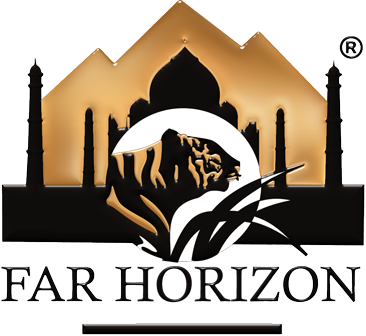The Ultimate Wildlife Tour
more_vert
-
Duration15 Days
-
Region
-
Category
-
Best Time
- October - June
Introduction
This program combines the amazing living jungles of India with the bird sanctuary of Keolado Bird Sanctuary at Bharatpur. Going deeper into the wilderness of the Jungle Book of Rudyard Kipling where stories of Mowgli's jungle adventures abound. Mowgli's Trails of the Jungle Book takes you through the Panna National Park, the Bandhavgarh National Park and the Kanha National Park where the fierce Royal Bengal Tiger - Sher Khan roars and Bhalu, the Sloth Bear protects Mughli. Combining this amazing wilderness with a visit to the ancient capital of India - Delhi, the Wonder of the World - The Taj Mahal, the Erotically Carved Temples of Khajuraho and the Victorian Kolkata, gives an amazing insight into the cultures of India. End with the Rhino Trails at the Kaziranga National Park, which is the greatest abode of Rhinos in the World with over 2,400 single horned rhinos roaming the grasslands of just this one national park.
Tour Highlights
- Sightseeing tour of Old & New Delhi
- Two visits of Keoladeo National Park (Bharatpur Bird Sanctuary)
- Sightseeing tour of Agra
- Train ride from Agra to Jhansi
- 2 Exclusive Jeep Safaris at Panna National Park
- Sightseeing tour of Khajuraho
- 3 Exclusive Jeep Safaris at Bandhavgarh National Park
- 2 Exclusive Jeep Safaris at Kanha National Park
- Sightseeing tour of Kolkata
- 1 Elephant Safari at Kaziranga National Park
- 2 Exclusive Safaris at Kaziranga National Park
Destinations Covered
Delhi
The City of GloryDelhi is said to be one of the oldest existing cities in the world, along with Jerusalem and Varanasi. It is the Capital Territory of India and a modern-day citadel that's dotted with ancient monuments.
History and Culture
Legend estimates it to be over 5,000 years old. Over the millennia, Delhi is said to have been built and destroyed 11 times. The oldest alleged incarnation of the city shows up in the Indian mythological epic Mahabharata as Indraprastha.
Bharatpur
The history of Bharatpur dates back to 5th century BC, when the Matsya kingdom flourished here. The Matsyas were allies of the Pandavas in the Mahabharata war. Legends say that the origin of the name Bharatpur is traced to Bharat, younger brother of Lord Ram. Laxman, the other brother, was given the most prestigious position as that of the family deity of the ruling family of Bharatpur. His name also appears in the state seals and coat-of-arms.
Agra
The Majesty of the TajAgra is the city of the Taj Mahal, in the north Indian state of Uttar Pradesh. Agra has three UNESCO World Heritage sites, the Taj Mahal, Agra Fort in the city and Fatehpur Sikri on the outskirts of Agra. There are also many other buildings and tombs from Agra's days of glory as the capital of the Mughal Empire.
Panna
A Gem amongst India's Tiger ReservesThe Reserve is situated in the Vindhyan Ranges and spreads over Panna and Chattarpur districts in the north of the state. Panna National Park was created in 1981. It was declared a Project Tiger Reserve by the Government of India in 1994. The National Park consists of areas from the former Gangau Wildlife Sanctuary created in 1975. Panna is the twenty-second Tiger Reserve of India and fifth in Madhya Pradesh.
Orchha
The Hidden TreasureKhajuraho
A living work of ArtBandhavgarh
The land of TigersBandhavgarh National Park is located in Madhya Pradesh state of India. This park is among the best national parks of India where Asian tigers can be easily viewed. Area of this park is of around 448 sq km. Bandhavgarh Hill, at the height of 811 meters above sea level, is located at the center of the park. This hill is surrounded by sloping valleys. More than 28 species of mammals and 250 species of birds & 70 species of butterflies are found in Bandhavgarh National Park. Common Langurs and Rhesus Macaque represent the primate group.
Kanha National Park
The land of Jungle BookA delightful town situated in the district of Mandla, Kanha National park is the haven of an exceptionally wide variety of wild animals, including the majestic creature tiger. Wide open grass plains with a backdrop of the city scrapers, scattered bamboo forests play host to a wide variety of wildlife and diverse bird-life with over 300 species recorded.
Kolkata
The City of JoyKolkata (formerly Calcutta) is the capital of West Bengal and the second largest city in India (after Mumbai). This city is a daily festival of human existence, simultaneously noble and squalid, cultured decidedly futuristic.
History and Culture
The history of Kolkata is intimately related with its invention during the British rule dating back 300 years ago. Earlier known as Calcutta, it originated as a capital of British India in 1960 when East India Company dominated the country.
Kaziranga National Park
The haven of one-horned rhinosA UNESCO World Heritage site, Kaziranga is famous as the abode of the one-horned rhinoceros. Made unique with a vibrant, well preserved and sustained ecology this park has a very versatile bio diversity which makes Kaziranga National Park a very important and popular tourist destination.
Detailed Itinerary
- Day 1 Arrive Delhi
- Day 2 Delhi
- Day 3 Delhi to Bharatpur by road (222kms / 4.5hours drive)
- Day 4 Bharatpur to Agra by Road (60kms/1hour drive)
- Day 5 Agra
- Day 6 Agra - Jhansi - Panna
- Day 7 Panna - Khajuraho - Panna
- Day 8 Bandhavgarh
- Day 9 Bandhavgarh- Kanha By Road: 210 Km / 5 Hours
- Day 10 Kanha
- Day 11 Kanha - Raipur - Kolkata
- Day 12 Kolkata
- Day 13 Kolkata - Guwahati
- Day 14 Kaziranga
- Day 15 Kaziranga - Guwahati - Delhi





























